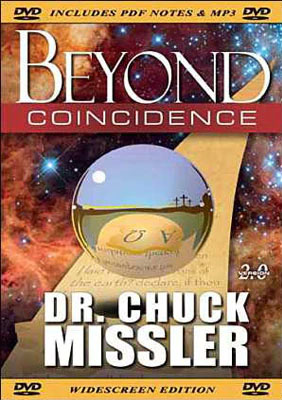The holidays are upon us. It's now a special time of treats and seasonal goodies, so most of us find ourselves hanging around the kitchen more than usual at this time of year!
The next time you open a brand-new jar of jam, jelly, or peanut butter, let's find out how good of a scientist you are!
Do you carefully follow the evidence, or do you blindly accept the prevailing folklore? Are you a victim of the myths and legends of our time, or do you think critically for yourself?
Our entire culture - our science, our social structure, and our educational system - is based on the specious premise of biogenesis: that
matter + energy g
Let's conduct an experiment. Take a new (unopened) jar of jam, jelly, or even peanut butter - direct from the supermarket shelf - and examine it carefully.
Notice that it is an "open" thermodynamic system: energy can enter and leave the container as it is exposed to different temperatures. (In fact, the container is probably also optically transparent, but that is incidental to our purposes here.)
According to the dogmas of the current high priests of biology (and other venerated elders of our society), occasionally, if you combine matter and energy, it is possible to yield new life forms. The accepted theory is that even inorganic matter, subjected to totally random processes, originally combined itself into an initial life form, from which all subsequent life evolved.
Let's now open the sealed jar and carefully examine the contents inside. Did you find any "new life"?
Of course not! (And aren't you glad!) Our example even contains organic material, which contributes an unfavorable bias to our null hypothesis (a handicap, as it were), but even that, too, helps establish our basic point. To attempt to use inorganic materials in such a container further clinches our conclusion: did we really evolve from a rock and some water?
The equation implied by our current priesthoods of science is erroneous: the underlying equation is incomplete.
matter + energy ≠ new life
matter + energy + information g new life
Unless there is introduced information, from an external source - a spore, or some other essential contaminant - no "new life" will ever be found. Ever.
Every day, for over a hundred years, we have continually conducted billions of experiments analogous to the one above and we never find any "new" life forms. Our entire food industry depends upon the fact that, unless an impurity is introduced, no "new life" is ever found. The Darwinists cannot explain the origin of life because they cannot explain the origin of the information necessary!
Take a leaf off a tree or a flower from the garden; examine almost any living thing under a microscope, and you are inescapably confronted with the evidence of design: elegant, skilled craftsmanship that remains virtually unparalleled by man.
As we enjoy the variety of treats over the holidays, consider the complexity of our digestive system: how we can intake such a variety of foodstuffs, and yet our body will selectively take precisely what it needs and pass the unneeded on through (along with the refuse from its own internal processes) and dispose of the excesses. It is a process so complex that it is still only partially understood and continues to defy attempts at comprehensive simulation on the most elaborate computers available.
We now know that even the "simplest" cells are more complex than a city filled with automated factories-building, manipulating, adjusting, growing. And they can do something that our factories cannot do: they can replicate their entire complexity in a matter of a few hours! We are just beginning to understand the nature of the three-out-of-four, error-correcting, digital coding structure used to coordinate the entire operation: the DNA code.
Virtually every field of science - except biology - has recognized the entropy laws which refute the possible emergence of design in the absence of external input. Microbiology has now put the final nails into Darwin's coffin.
Every time you open a fresh, new jar of some food item, and don't find evidence of "new life," you have conducted an empirical experiment which refutes the common superstition which continues to be promoted by the orthodox witch doctors of biogenesis: that life occurred without the involvement of a master designer. This, of course, also exposes the real motives of the vested priesthood: prostituting their avowed "seeking of truth" to their committed resolve to avoid any accountability to a Creator.
Think about it. And follow the evidence, not the prevailing superstitions. Pursue evidence-based education in lieu of the contrary-to-fact dogmas inculcating our youth and bankrupting their understanding of the miracle of their origin, thus denying them the majesty of their destiny.
For further study, see our audio briefing packages, In the Beginning there Was... Information, Beyond Coincidence, and Genesis and the Big Bang.
Sources:
Behe, Michael J., Darwin's Black Box, Simon and Schuster, New York NY, 1996.
Dempski, William, The Design Inference, Cambridge University Press, Cambridge UK, 1998.
Denton, Michael, Evolution: A Theory in Crisis, Adler & Adler, Bethesda MD, 1986.
Gitt, Werner, In the Beginning Was Information, Christliche Literatur-Verbreitung e.V., Postfach Bielefeld, Germany, 1997. (Trans. of Am Anfang war die Information, Hnssler, Neuhausen-Stuttgart, Germany 1994.)
Missler, Chuck, Cosmic Codes: Hidden Messages From the Edge of Eternity, Koinonia House, 1999.
Johnson, Philip, Darwin on Trial, Regnery Gateway, Washington D.C., 1991.
Perloff, James, Tornado in a Junkyard, Refuge Books, Arlington MA, 1999.






